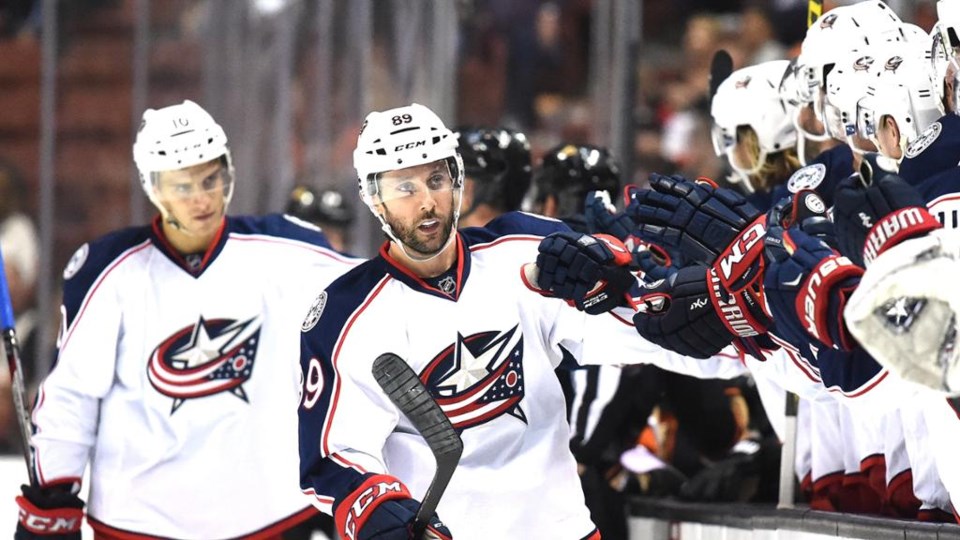What is the purpose of a fourth line?
In an ideal (hockey) world, all of your lines would feature first-line quality players. During 2010 Olympics, Team Canada spent most of the tournament with a fourth line consisting of Rick Nash, Jonathan Toews, and Mike Richards. At the 2006 Olympics, it was Ryan Smyth, Vincent Lecavalier, and Martin St. Louis.
Obviously, when you have your pick of some of the best players in the world, you don’t build a grinding, low-skill fourth line. But it’s a bit more understandable when an NHL team does so, particularly when you consider the salary cap.
There’s only so much money to go around: once you’ve paid your stars, you have to fill out the lineup with cheaper players. Ultimately, the fourth line gets the dregs: journeymen playing for league-minimum, former stars playing out their final years, or AHL call-ups.
Most of the time, the focus for a fourth line is to simply not cost the team anything. It’s the opposite of : don’t take chances, don’t make mistakes, don’t get messy. Most importantly, don’t give up a goal. Get a few hits in, grind along the boards for a while, then get off the ice so that your scoring lines can score.
That’s not a great role for the Canucks young wingers looking for a spot in the lineup, like Nikolay Goldobin, Anton Rodin, Reid Boucher, Brock Boeser, or Jonathan Dahlen. These are creative, offensively-gifted players who would thrive playing alongside other offensively-gifted players in an offensive role rather than grinding minutes with low-skilled fourth-liners.
Fortunately, the Canucks recently signed an offensively-gifted, veteran playmaking centre who could play with these young wingers and help develop them: Sam Gagner.
Gagner is likely looking for a larger role than fourth-line centre, but what he wants most of all, , is to play important minutes in an offensive role. His best chance for getting that role might actually be on the fourth line.
Speaking about his time in Columbus, Gagner said, “With the situation I was in, I got to play in an offensive role. Even at even-strength I was playing with offensive players and then on the power play, being on that first unit and getting a chance to play some important minutes.”
If Gagner wants to play in the top-six, he’ll end up on the wing, either with Bo Horvat and Sven Baertschi or with the Sedins. But the Canucks have other options on those two lines that might be a better fit: both Anton Rodin and Brock Boeser worked well with Horvat and Baertschi in short stints last season, while Markus Granlund and Loui Eriksson are good bets to play with the Sedins.
That leaves the third line, with Brandon Sutter in a more defensive role, or the fourth line.
Gagner is not well-suited for a defensive role: it doesn’t fit his skillset at all and playing with Sutter would put a damper on his creative, playmaking side. But if he centres the fourth line, he could play with some creative offensive players that would fit much better with his skillset.
From a fan perspective, it’s far more exciting to picture a fourth line of Nikolay Goldobin, Sam Gagner, and Anton Rodin than it is to picture a fourth line of Brendan Gaunce, Alexander Burmistrov, and Derek Dorsett. Admittedly, both are more exciting than a Jayson Megna, Michael Chaput, Jack Skille fourth line.
Between Sutter’s line and a Sedin line with a two-way winger like Granlund or Eriksson, the Canucks should be able to divvy out the defensive zone responsibilities, while still giving their young wingers chances to develop the defensive side of their games as well
And, while winning isn’t as important as development next season, a scoring fourth line that can outplay the grinding, lesser-skilled fourth lines of other teams might ultimately lead to a few more wins.
Both teams that made it to the Stanley Cup Final this past season got production from their fourth line.
The Penguins notably got production from Scott Wilson, who put up 8 goals and 26 points. Colton Sissons got 8 goals in the regular season for the Predators from the fourth line, while Austin Watson put up 17 points. The two combined for an additional 10 goals and 21 points in the playoffs.
Sissons and Wilson are on league-minimum contracts, while Watson is paid just north of $1 million per year. The Predators and Penguins got offensive punch at a low price from the bottom of their lineup.
The Canucks are in a unique position in that development is far more important than making the playoffs next season. They also have a bevy of talented young wingers that are pushing for roster spots.
Several of those young wingers are said to “need” to play in the top-six. The rhetoric is that they are not well-suited for a physical, grinding, defensively-sound bottom-six role. They need to play with other offensively-minded players to make the best use of their skillset.
So, why not use Sam Gagner and the fourth line to develop those players and give them a chance to put that offensive skillset to good use?
Ěý



